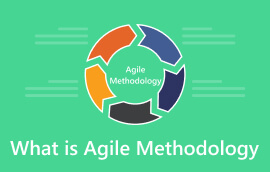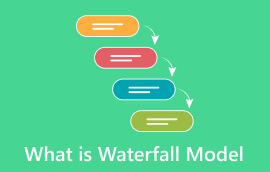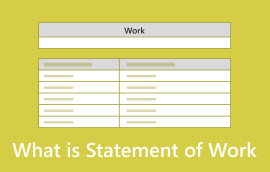Easy Guide to What is Cost-Benefit Analysis All About
Struggling to decide which one is better between the different choices provided? Well, there is a method to help you make the right choice. It is a process called Cost-Benefit Analysis or CBA. To establish it well, you need to have a clear understanding of this analysis. Thus, this post is here to guide you with that and how it works. Not only will we define it, but we will also provide a cost-benefit analysis template and example. Without further ado, get started by proceeding to the next part of this article.

- Part 1. What is Cost-Benefit Analysis
- Part 2. Uses of Cost-Benefit Analysis
- Part 3. How to Do a Cost-Benefit Analysis
- Part 4. Cost Benefit Analysis Example and Template
- Part 5. FAQs About What is Cost Benefit Analysis
Part 1. What is Cost-Benefit Analysis
Cost-benefit analysis (CBA) is a structured method utilized by many. As its name implies, it is used to compare the benefits and costs of different options. It helps to analyze which choices to pursue and which to avoid. It also involves listing all the positive and negative aspects of each choice. Plus, it assigns a value to them and then compares these totals to decide which option is better. Governments, businesses, and individuals use CBA to make smarter decisions. It includes decisions like spending money, investing in projects, and more. Yet, it might not always be perfect or easy to measure everything accurately. Still, CBA helps weigh the pros and cons between choices. Hence allowing anyone to make more informed and sensible choices in various situations.
There you have it about the cost-benefit analysis meaning. Now, it’s time to learn its uses as you move on to the next section.
Part 2. Uses of Cost-Benefit Analysis
Cost-benefit analysis (CBA) is a decision-making method that helps individuals, organizations, and governments. It lets them check the costs and benefits of a particular project or policy. The following are some examples of how CBA is used in different fields:
Cost Benefit Analysis in Economics
In economics, CBA is extensively used to test the efficiency of projects or policies. It involves measuring the costs and benefits of the project or policy in monetary terms. It compares them to identify if the benefits outweigh the costs. For instance, it can be applied in assessing infrastructure projects. It can be building highways or bridges. So, CBA compares construction costs with expected benefits. It may include benefits like decreased travel time and boosted economic activity. Then, it helps policymakers identify whether to move forward or explore other solutions. Hence, CBA helps them make informed decisions about the project’s feasibility.
Cost Benefit Analysis in Healthcare
Now, CBA in healthcare plays a vital role when it comes to decision-making. Here, it measures the costs and benefits of various medical interventions. It may include the costs of medical treatments, public health interventions, and more. In contrast, the benefits are improved health outcomes and quality of life. For example, healthcare can use it to assess the introduction of a new medical technology or drug. Healthcare professionals assess the expenses of introducing technology or medication. They then consider the expected health benefits and improved patient outcomes. Finally, it will allow them to decide on adopting or prioritizing it. Most especially if they have budget constraints in mind.
Cost Benefit Analysis in Psychology
Finally, we have a cost-benefit analysis In psychology. So, CBA is utilized to assess interventions or programs. It focuses on the aim of improving mental health or behavioral outcomes. Now, it can be applied to assess therapy program effectiveness for mental health conditions. Analysts compare program costs to expected benefits: better life, fewer symptoms. While the expected benefits include reduced societal costs tied to mental health issues. As a result, it helps gauge program impact and cost-effectiveness.
Part 3. How to Do a Cost-Benefit Analysis
Here is a general process if you plan to do a cost-benefit analysis:
Define the scope.
The first thing you need to do is to define and understand your situation. You have to Identify the problem or issue that needs to be addressed. Then, determine the scope of the analysis. It usually starts by knowing the purpose of the cost-benefit analysis.
Determine the costs and benefits.
Next up, it’s time to identify the costs and benefits of the project or decision you’ll make. Ensure to list all the costs of every action under consideration. Create two separate lists for cost and benefit. Beyond these, consider:
Intangible costs: Hard-to-measure expenses.
Indirect costs: Fixed expenses.
Opportunity costs: Lost benefits from choosing one strategy or product over another.
After outlining costs, focus on potential benefits such as:
Intangible: Enhanced employee morale.
Direct: Increased revenue and sales from a new product.
Indirect: Boosted customer interest in your brand.
Competitive: Becoming an industry pioneer or leader in a specific field.
Assign monetary values
Assign a monetary value to both costs and benefits whenever possible. Some aspects might be straightforward to quantify in monetary terms. While others, like environmental impact or social benefits, could be more challenging. Make estimations and conversions to a common unit (usually dollars) for a fair comparison.
Compare the costs and benefits.
Compare the costs and benefits. That way, you will be able to determine which one provides the greatest net benefit. Subtract the total costs from the total benefits for each alternative. This provides the net benefit or cost associated with each option. A positive net benefit indicates that benefits outweigh costs. Then, a negative net benefit suggests the opposite.
Make a decision.
Based on the results, decide which alternative to pursue. Utilize the CBA results to inform decision-making. Select the alternative with the highest net benefit or cost-benefit ratio.
How to Create a Cost-Benefit Analysis Diagram
Looking for a tool to create a diagram? We highly recommend you use MindOnMap. It is a dependable and powerful online diagram-making tool. In fact, it is also now accessible offline. That means you can download its app version on Mac and Windows computers. With it, you can turn your ideas into a diagram to visually represent them. It offers various elements and shapes annotations you can use to personalize your work. Apart from that, it provides various templates to use. You can create fishbone diagrams, org charts, treemaps, and so on. What’s more, you can select a theme and style you want for your diagram. In addition, you can even make a sample cost-benefit analysis format on it. Get to know how to create a diagram with it using this guide:
Click the Free Download button below to get MindOnMap on your device. Then, create a free account.
Secure Download
Secure Download
When you’re directed to the New section, select your desired layout. As for this cost-benefit analysis, it’s best to use the Flowchart option.

On the canvas, begin by clicking the Table option from the annotation tools. Input the costs and benefits of your project by adding text. Also, include their values in USD. Afterward, select themes or colors for your table.
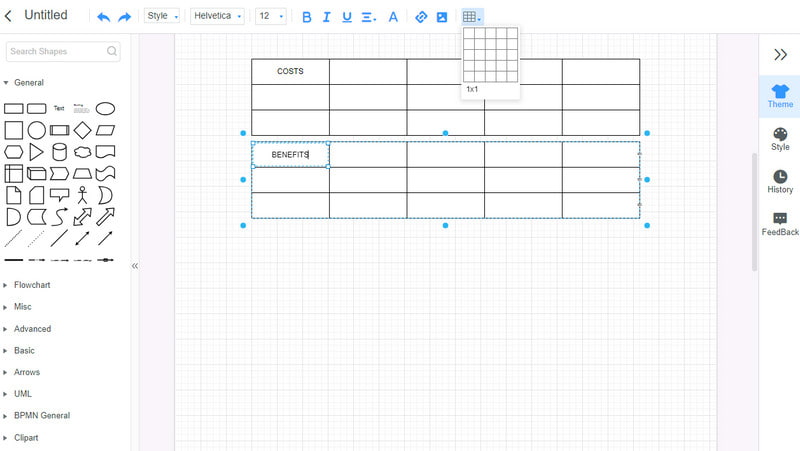
Once done creating your diagram, click the Export button to save it. Also, you may choose your desired output format. Optionally, you can click the Share button to let others view your diagram.
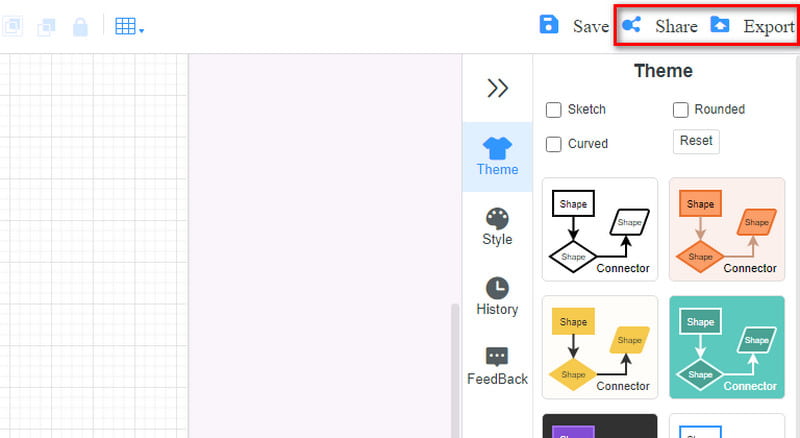
Part 4. Cost Benefit Analysis Example and Template
In this part, we have provided an example and template for your reference.
Example. Project: Upgrading Office Equipment
See the picture below, as it outlines the projected costs and benefits of upgrading office equipment.
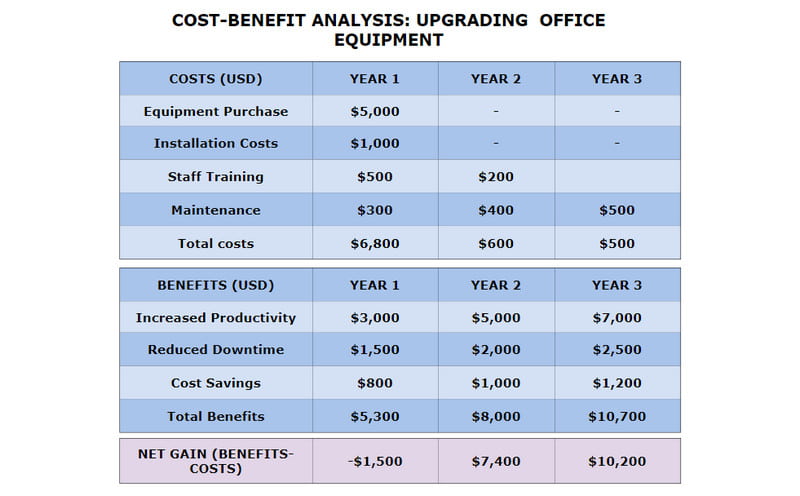
Get a detailed cost-benefit analysis example.
Now, if you’re in search of a template to use, check the image below. In fact, your cost-benefit analysis can be customized according to your needs. This template reference is created on MindOnMap. In fact, you can even perform a cost-benefit analysis in Excel if you want to.
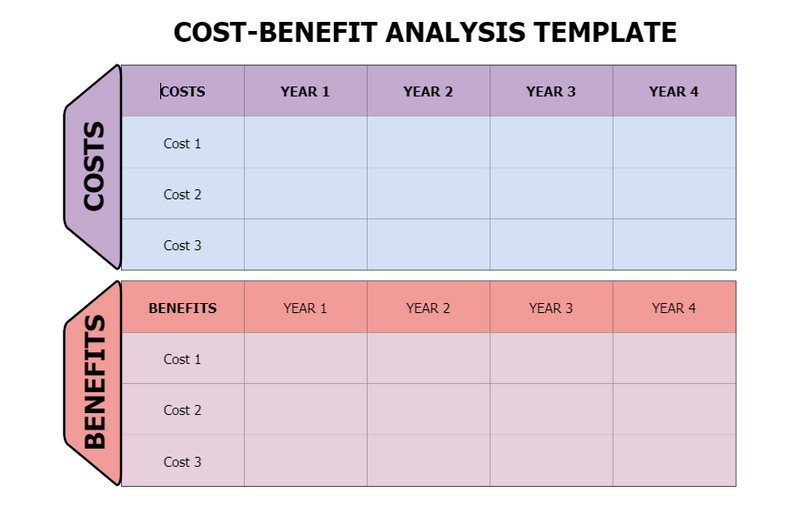
Get a complete cost-benefit analysis template.
Further Reading
Part 5. FAQs About What is Cost Benefit Analysis
What are the 4 types of cost analysis?
The 4 types of cost analysis are:
◆ Cost-Feasibility Analysis
◆ Cost-Effectiveness Analysis
◆ Cost-Benefit Analysis
◆ Cost-Utility Analysis
What are the 5 steps of cost-benefit analysis?
Step 1. Define the project or decision.
Step 2. Identify costs and benefits.
Step 3. Assign monetary values to costs and benefits.
Step 4. Compare costs versus benefits.
Step 5. Make a decision based on the analysis.
How do you carry out a cost-benefit analysis?
To carry out CBA, start by defining the project or decision clearly. Next, determine all costs and benefits related to it. Now, allocate monetary values where possible. Then, begin comparing total costs against total benefits. Finally, use the analysis to guide the decision-making process.
Conclusion
As shown above, that’s all you need to know about what is cost-benefit analysis. Also, you were able to learn how to conduct it, including its uses in different fields. Now, if you’re planning to create a CBA template and example diagram, a solution is also provided. It is through MindOnMap. It offers an intuitive user interface and a straightforward way to create your desired diagrams. Thus, it is perfect for both professionals and beginners.









